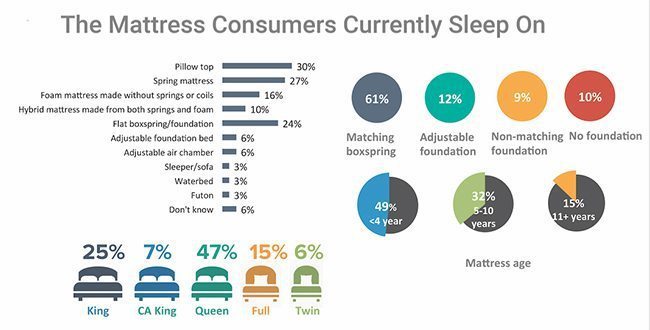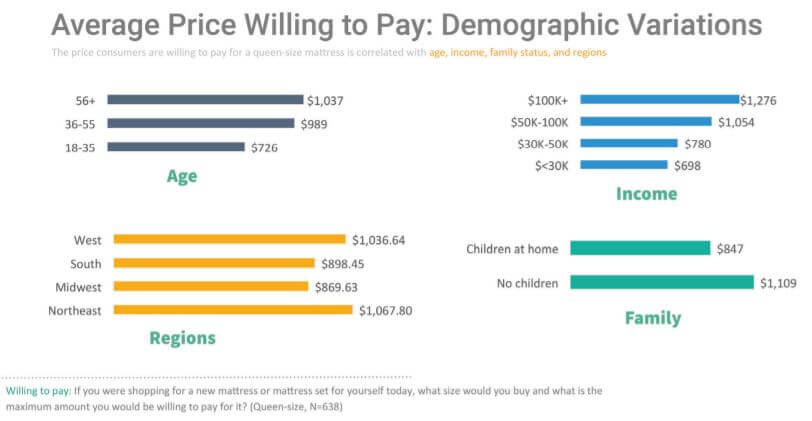Want a heads up when a new story drops? Subscribe here.
Building your brand strategy is not something you do overnight. It does not come down to drafting innovative advertising campaigns and ensuring great customer support either. Creating a brand strategy is a continuous process that finds its origin way back to the business conceptualization phase.
Laying solid base for your brand expansion is the sole essential thing when starting your own business and building your own brand. You have to plan your moves way ahead just like playing a chess game – visualize your strategy, attempt to foresee your competitors’ reaction to it and base your opening system on solid evidence of successful moves and positioning.
So how you should start with the creation of your successful brand strategy?
You should first ask yourself 3 key questions:
- Is there an explicit need for your product or service?
- How to accurately identify your target market?
- How to build strategic partnerships as a shortcut towards attaining your goal?
Each of those three steps requires thorough research and preparation. Do not take this lightly and delve deep into the specifics of your market. How to do that? Let us lead the way:
Is There an Explicit Need for Your Product/Service?
We all know that The Client should be our top priority when setting our brand strategy and we should first focus on customers’ needs before we endeavor anything else. So in this regard we’d better tackle the question:
What is a customer need?
A customer need most essentially lays the motivation behind one purchasing a product or a service. Either emotional or functional, customer’s needs are the ones that trigger people into making purchasing decisions.
Let’s take for instance the common physiological need everyone faces when tired. We need to rest, right? So based on the specifics of your target market you should be able to conclude on what product/service would be the best solution to offer to address that particular need. If we take mattresses as your prime product we could consult a relevant market to conclude that:

Credits: Bed Times Magazine
Almost half of the market segment needs spacious (queen) mattresses, they also need a solid foundation to place it on (a matching boxspring) and aim for optimum initial comfort (pillow top). What is more it is essential to keep in mind that customer needs in this market vertical rotate around health &comfort and on a smaller scale – need for home & lifestyle improvement.
Usually the best approach to build your brand strategy is to identify a market segment where customers are not satisfied with the products or services offered. You could fill in the void and come up with the perfect solution for the unaddressed customer’s needs.
On the other hand if you think that the selected market has a potential and is not that saturated to welcome another player, then by entering that market niche you should make an effort to differentiate your product/service from your competition.
The better the differentiation strategy – the higher the profit you could generate in the long run.
What are the different types of customer needs?
Customer needs are associated either with the functionality or the emotional aspect of a given product or service. On the emotional front customer’s needs could be associated with a desire to attain security, health, comfort, overall well-being, ego satisfaction, etc. As it comes to specific product needs the list goes as follows:
1. Price – the majority of customers is price-sensitive and could easily switch to competitor’s brand if they offer better pricing terms. And while lower-income buyers would more often focus on basic economy & security needs, those with higher income would build up to the list emotional needs like belonging to a community or need for attention for instance.
2. Functionalities – does the product address a single or various clients’ needs? The added value would definitely give your product/service a competitive edge. Think of the primary and secondary functionalities.
Let’s get back to our example with the mattresses. The prime functionality of a mattress would be to appease one’s need for comfortable sleep, right? It should provide a solid support to one’s spine as well as proper spinal alignment (a health need).
But there is much more to mattresses as it comes to addressing customers’ needs. One could’ve recognized the need to have an extra bed at their disposal that does not take a lot of space when not used – thus they’ll prefer an airbed. Or one might need a mattress that will suit their favorite sleeping position: if one tends to sleep on their stomach, they’ll most probably invest into a foam mattress. People with specific health conditions would need an allergen-free product like natural latex mattresses.
Try to achieve a fine balance between offering your target audience’s prime and secondary product functionalities. Covering a full set of needs could be a challenge, but it will pay off in the long run.
3. Design – this one is no brainer, a product should be appealing to the eye (satisfaction of aesthetic needs) and easy and convenient to use (need for comfort). Covering this customer requirement will also consist in paying great attention to your product packaging and overall look.
4. Reliability – a product/service is required to offer safety usage as well as to perform as advertised and as expected according to the standard set in the industry.
5. Compatibility – offering easy integration with other complementary products is really important when trying to achieve utter client satisfaction.
6. Sustainability – people are getting more and more aware of leaving environmental impact and that’s a trend that a responsible business owner who is growing their business should not ignore. High customer requirements in terms of brand ethics and community impact are gradually being incorporated in product design and promotion.
You wonder how to adapt the customer’s need for product sustainability to your brand strategy? The guys from Avocado are a fine example of putting this plan into action. They have resolved this challenge by coming up with a vegan and Greenguard-certified mattresses:

Credits: Avocado Green Mattresses
7. Standards and compliance – whether those would be related to health standards, product ingredients, manufacturing and so on, we should be careful with our target audience’s needs. Neglecting their standards & compliance requirements can affect customer’s trust and that’ll result in immediate negative hit on sales.
8. Transparency – this customer’s need could affect a number of aspects of your brand strategy, including pricing, research, testing & manufacturing stages of your production processes, suppliers, funding, environmental footprint, ethics, advertisement campaigns and influencer choice.
9. Customer support – the customer’s need to know that they could turn to the seller if any issue arises throughout the product use is often quite strong, especially when it comes to product/services that require significant initial investment or skills and experience to get them going.
How to Identify Customer Needs
Identifying customer needs involves conducting market research that could take the shape of: surveys, social media analysis, assessment of clients’ feedback (customer interviews), and focus groups. Let’s go over each one and see how they work:
1. Identify Customer Needs via Surveys offer a fine opportunity to benchmark your product/service against that of your competitors’. They could not only offer you insight on what your target audience’s needs are, but would reveal to you whether they are currently satisfied by the market offerings, is there a complementary product/service functionality that they are particularly interested in having and so on.
Below you can see that a customer survey can give a lot of insight on your target audience including how customers’ demographics affect purchasing predispositions and patterns:

Credits: Sleep Savvy Magazine
2. Identify Customer Needs on Social media – this is a great way to actively listen to your target audience and learn about their specific needs. Following up on relevant hashtags, searching by selected keywords, monitoring competitors’ profiles – there are a lot strategies you can use to identify customer needs on social media.
Consider tracking the adjectives clients use to define your products/services and brand. Analyze the client reviews, skim through the comments they’ve left. Information is everywhere; you simply need to filter the valuable data out from the noise.
3. Identify Customer Needs via Clients’ Feedback is what we all need to focus on when creating an exceptional strategy for our brands. In this sense conducting customer interviews would be the most efficient way to gather the needed data. Make sure you include questions that trace down the different stages of the client’s journey. Ask your customers about the good, bad and ugly aspects they find in your brand, product/services.

Credits: Sleep Savvy Magazine
How to Successfully Address Customer Needs
The process might sound intimidating, but if you have successfully identified your customers’ needs, then, by all means addressing them should be a piece of cake.
1. Address your customers’ needs with relevant message – your communication with the target audience should be honest, direct and consistent. Your marketing campaigns throughout all the selected channels should be united by the same idea; leave no space for distraction, confusion or personal interpretation as to avoid confusion and misunderstandings.
Aim towards attaining brand voice and image consistency. Engage all customer-serving departments like sales and customer service into delivering consistent message to the target audience. This will involve improving your internal communication and training processes.
2. Address your customers’ needs with quality customer support – letting you customers know they’ve been heard and assisting them every step of the way on their customer journey is quite a responsible approach towards addressing their needs. Perfecting your customer support procedures throughout every channel including email, phone, social media, in person, customer self-service, virtual assistants and chatbots, is essential. You need an integrated customer support strategy that will encompass all aspects of your client communication.
3. Address your customers’ needs by measuring customer satisfaction – verifying the success rate of how you address customer’s needs is the key to success. It will give you insights on how you could further improve your product/service like for instance whether it’s time for product innovation, or it’s time to kill a product, whether you need to change your message or perceived quality of customer support.
How to Accurately Identify Your Target Market?
In order to identify your target audience you need to identify the specific market segment that is most likely to purchase your product/service. You won’t be excluding anyone; rather you’d be focusing on the specific group of people whose needs you’ve specialized in satisfying.
We cannot waste valuable resources and try to reach everyone with our message. We simply cannot afford to target anyone. Thus defining a target market is essential in building a cost-effective brand strategy.
1. Come Up with a Buyer Persona – first you have to identify who is your prime customer. In this case you’ve already defined what kind of need(s) your product/service addresses, now is the time to visualize what kind of people experience this kind of need.
Integrating the image of a buyer persona in your brand strategy will help you better visualize your target customer in terms of personal characteristics, interests, needs, fears, daily routines even. Being aware of all that will give you the freedom and insight on how to draft your communication strategy and how to position your product/service.
The Casper team has defined one of their buyer personas as a happily married, middle-class father of two:

Credits: Casper TV Commercial, ‘Unbox Better Sleep’
2. Research Your Competitors – instead of starting everything from scratch pry into your competitors’ strategies. Single out the top players and see what tactics have worked from them. Be thorough in your research. Go over product features, pricing and promo campaigns. Can you see what their buying personas are? Is there a niche they are ignoring or marketing channel they are overlooking? Which products already enjoy a lot of traction and are considered “hot” at the given moment?
3. Identify the Market Segments and Take Your Pick – study your market: is it new, is it growing, is it small market, does it have а potential. Consider the different niche options in that particular market and assess whether they pose a valid opportunity to your brand.
How to Build Strategic Partnerships as a Shortcut towards Attaining Your Goal?
When you are considering broadening the scope of your product/service portfolio it is important to first assess your strengths and weaknesses. If you think a comprehensive solution will best fit the needs of your target audience, but you lack the expertise to offer the quality needed or the know-how to scale it, then you could consider taking a shortcut and partner up with a field pro.
What you need to keep in mind when building a strategic partnership is to:
1. Look for a partner within your industry first – make sure your company values, ethical standards and client-focus are well aligned with those of your partner’s. In the best-case scenario your partner will know just as well the needs and preferences of your target audience because they are also attending to those. By teaming up you should be able to reach a greater portion of your target audience and further grow your business
2. Establish the terms of your partnership clearly – avoid any potential misunderstanding by entering a partnership with well-defined deal terms. Have a clear idea of what you’re offering and what you are getting in return. Elaborate on how your collaboration would benefit your target audience. The value added should be obvious both to you and to your clients.
3. Maintain an open ongoing communication – do not let your interactions get stale. Schedule regular meeting and discuss every aspect of your partnership. Conduct summary reports on a regular basis and whenever a problem or disagreement arises take the time to go over it and talk about it until you come up with a solution that suits both parties.
Remember that you need to share common vision and ethical standards. Your customer-focus should be equally strong just as well.
Do you feel ready to start drafting your successful brand strategy? You are well backed up by theory, let’s see some action: check and mate!!




